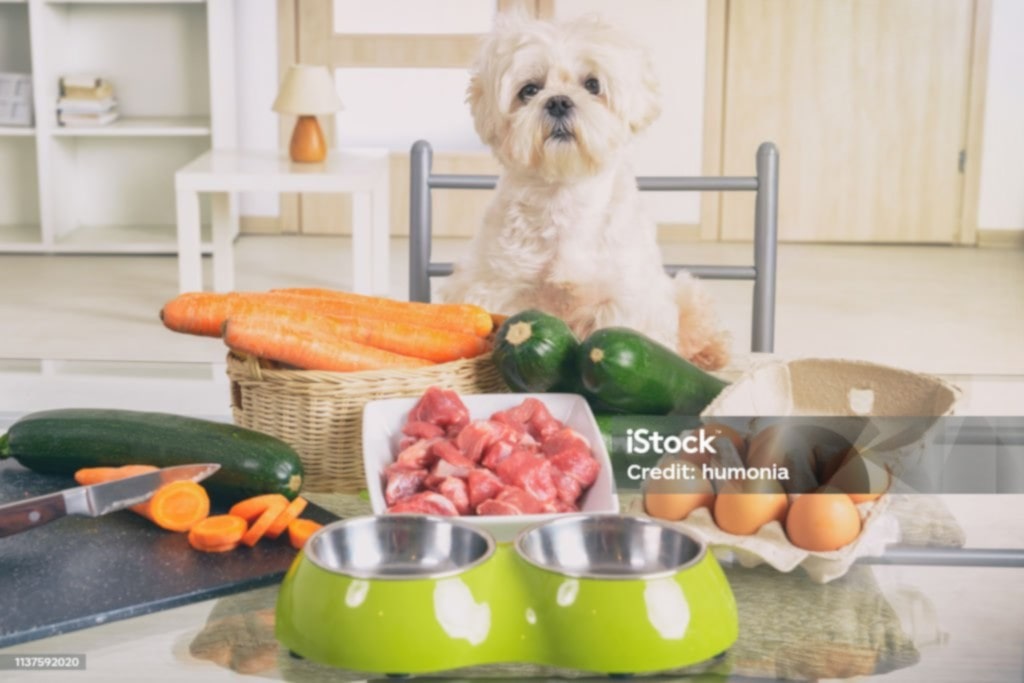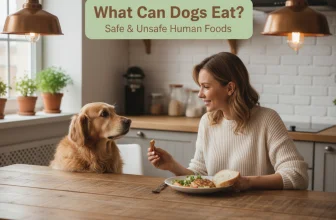Organic Dog Foods: A Comprehensive Guide to Healthier Pet Nutrition

What Are Organic Dog Foods?
Organic dog foods are specialized pet food formulations made from ingredients that adhere to strict organic standards throughout the entire production process—from farming and sourcing to manufacturing and labeling. Unlike conventional dog foods, which may contain synthetic chemicals, artificial flavors, preservatives, or genetically modified ingredients, organic dog foods are made to be as natural and unaltered as possible, aligning with principles of holistic animal health and sustainable agriculture
Key Characteristics of Organic Dog Food
- USDA Certified Organic: Products carrying the USDA seal contain at least 95% certified organic ingredients.
- No Artificial Preservatives or Colors: Only natural preservatives like mixed tocopherols are used.
- Non-GMO Ingredients: Ensures no genetically modified organisms are present.
- Free from Synthetic Hormones and Antibiotics: Particularly relevant for meat-based components.
- Sustainable and Ethical Farming Practices: Supports eco-friendly agriculture and humane animal treatment.
Why Choose Organic Dog Food?
1. Improved Digestive Health
Organic ingredients tend to be easier on the digestive system, especially for dogs with sensitivities or allergies. Lack of chemical residues reduces the risk of GI inflammation.
2. Allergy Reduction
Many conventional dog foods include fillers like corn, soy, and wheat—common allergens. Organic brands often avoid these, opting for hypoallergenic options like sweet potatoes, brown rice, or quinoa.
3. Boosted Immunity
Organic ingredients—rich in antioxidants, omega fatty acids, and essential amino acids—strengthen the immune system and reduce oxidative stress.
4. Long-Term Health Benefits
Although scientific studies are still evolving, pet owners report improvements in:
- Skin and coat quality
- Dental hygiene
- Energy levels and stamina
- Weight management
Certification Standards and Regulations
USDA Organic Certification
The USDA National Organic Program (NOP) mandates:
- No synthetic pesticides or fertilizers
- Humane livestock practices
- 95–100% organic content for label eligibility
AAFCO Nutritional Compliance
While USDA governs organic standards, the Association of American Feed Control Officials (AAFCO) ensures:
- Minimum nutritional adequacy for dogs
- Proper labeling and guaranteed analysis
- Transparency in ingredient sourcing
✅ Important Note: Organic does not automatically mean “nutritionally complete” — verify AAFCO compliance when selecting a brand.
Entity Examples in the Organic Dog Food Landscape
| Entity Type | Examples |
|---|---|
| Certifying Bodies | USDA, Organic Trade Association, ECOCERT |
| Nutritional Standards | AAFCO, NRC (National Research Council) |
| Ingredient Sources | Organic chicken, wild-caught salmon, pesticide-free spinach |
| Brands | Castor & Pollux, Tender & True, Open Farm, The Honest Kitchen |
| Veterinary Experts | Integrative vets, pet nutritionists, and holistic pet practitioners |
Common Pre, Mid, and Post Phrase Taxonomies
| Pre-Phrase | Mid-Phrase | Post-Phrase |
|---|---|---|
| USDA-certified | organic dog food | for sensitive stomachs |
| ethically sourced | meat-based formula | with no antibiotics |
| grain-free | nutrient-rich blend | Recommended by vets |
| human-grade | chicken and brown rice | for small breed dogs |
| non-GMO | superfood ingredients | under USDA standards |
Ingredient Spotlight: What to Look For
- Proteins: Organic turkey, cage-free eggs, pasture-raised lamb
- Carbohydrates: Brown rice, barley, oatmeal
- Vitamins & Minerals: Zinc, Vitamin E, Biotin, derived from organic fruits and vegetables
- Additives: Natural probiotics, omega-3s from flaxseed or fish oil
Topical Alignment and Entity Relationships
- Veterinarians often guide pet owners toward organic options when managing chronic conditions like dermatitis, allergies, or gastrointestinal disorders.
- Pet food formulators align organic ingredients with AAFCO nutritional baselines, ensuring balance.
- Certifying agencies (USDA, ECOCERT) ensure organic legitimacy, building trust with consumers.
- Ingredient suppliers (e.g., free-range poultry farms) connect directly to the nutritional and ethical value of the product.
Buyer Considerations
| Factor | What to Check |
|---|---|
| Certification | USDA Organic Seal |
| Label Clarity | “Complete and Balanced” as per AAFCO |
| Protein Source | Named meat (e.g., “Organic Chicken” vs. “Meat Meal”) |
| Ingredient Order | First 3 items should be whole foods |
| Transparency | Brand’s sourcing and manufacturing details |
Comparing Organic vs. Conventional Dog Foods
| Feature | Organic | Conventional |
|---|---|---|
| Pesticides | None | Often present |
| Hormones/Antibiotics | Forbidden | Common in meat |
| GMO Ingredients | Not allowed | Commonly used |
| Nutritional Content | Natural + Enhanced | Often supplemented synthetically |
| Cost | Higher | Lower |
Veterinary & Expert Perspectives
- Dr. Karen Becker (Holistic Vet): Advocates for real-food-based organic diets.
Cornell College of Veterinary Medicine: Notes improved outcomes when diets are aligned with a dog’s physiological needs, especially for sensitive breeds.
Frequently Asked Questions About Organic Dog Foods
1. What does “organic” mean in dog food?
“Organic” in dog food means that the ingredients are produced without synthetic pesticides, chemical fertilizers, GMOs, or artificial additives. Certified organic dog foods must follow strict USDA or ECOCERT standards and often include ethically sourced, hormone-free animal proteins.
2. Is organic dog food better for my dog’s health?
Yes, organic dog food may offer health benefits such as reduced exposure to toxins, fewer food sensitivities, improved digestion, a shinier coat, and better weight management—especially for dogs with allergies or sensitive stomachs.
3. How do I know if a dog food is truly organic?
Look for official certifications like the USDA Organic Seal or labeling that says “100% Organic” or “Made with Organic Ingredients.” Also, review ingredient sourcing and check for AAFCO nutritional adequacy statements to ensure complete and balanced nutrition.
4. Does organic dog food contain meat by-products or fillers?
Certified organic dog foods typically avoid low-quality fillers like corn, wheat, soy, or animal by-products. Instead, they use named proteins (e.g., organic chicken, grass-fed beef) and whole food ingredients.
5. Are there any risks to feeding organic dog food?
Organic dog food is generally safe. However, ensure it meets AAFCO standards for your dog’s life stage. Some organic diets may lack sufficient protein or essential nutrients if not properly formulated.
6. Is organic dog food the same as grain-free dog food?
No. Organic dog food refers to how ingredients are grown or raised, while grain-free dog food avoids grains like corn, wheat, or rice. You can find organic dog foods that include grains or are grain-free, depending on the formula.
7. Why is organic dog food more expensive?
Organic dog food costs more because of:
-
Higher ingredient quality
-
Certification and compliance expenses
-
Sustainable and humane farming practices
-
Limited production and sourcing transparency
8. Can puppies eat organic dog food?
Yes, as long as the organic food is labeled for “growth” or “all life stages” and meets AAFCO nutrient profiles. Puppies have specific needs for protein, calcium, and calories that must be covered.
9. What are some examples of organic ingredients in dog food?
Common organic ingredients include:
-
Organic chicken or turkey
-
Organic brown rice or quinoa
-
Organic sweet potatoes, carrots, spinach
-
Organic flaxseed or coconut oil
10. Which brands make USDA-certified organic dog food?
Some reputable organic dog food brands include:
-
Castor & Pollux (Organix)
-
Tender & True
-
Open Farm
-
The Honest Kitchen
-
Halo Holistic
Conclusion: Is Organic Dog Food Worth It?
For pet owners who prioritize natural, ethical, and health-conscious feeding, organic dog foods offer compelling benefits. When paired with nutritional completeness (AAFCO compliance) and transparency, they serve as a powerful tool for preventative health and longevity in dogs.
📖 Read More: Grain-Free vs. Grain Dog Food – Which Is Best?
Still deciding which type of dog food best suits your furry friend’s needs?
While organic dog food focuses on ingredient purity and sustainable farming, it’s also important to understand the grain vs. grain-free debate, especially for dogs with specific dietary sensitivities or breed-related health risks.
In this in-depth comparison by Top Dog Foodies, you’ll learn:
-
The key differences between grain-free and grain-inclusive diets
-
Pros and cons of each based on nutritional science
-
Which dogs may benefit from or avoid grains
-
Insights into FDA investigations on grain-free formulas and heart disease
🔗 Explore the full article here:
👉 Grain-Free vs. Grain Dog Food – Which Is Best?
Or you can also red more blogs HERE.
Whether you’re considering organic, grain-free, or hybrid formulations, understanding all options will help you make the most informed and health-conscious choice for your dog.







